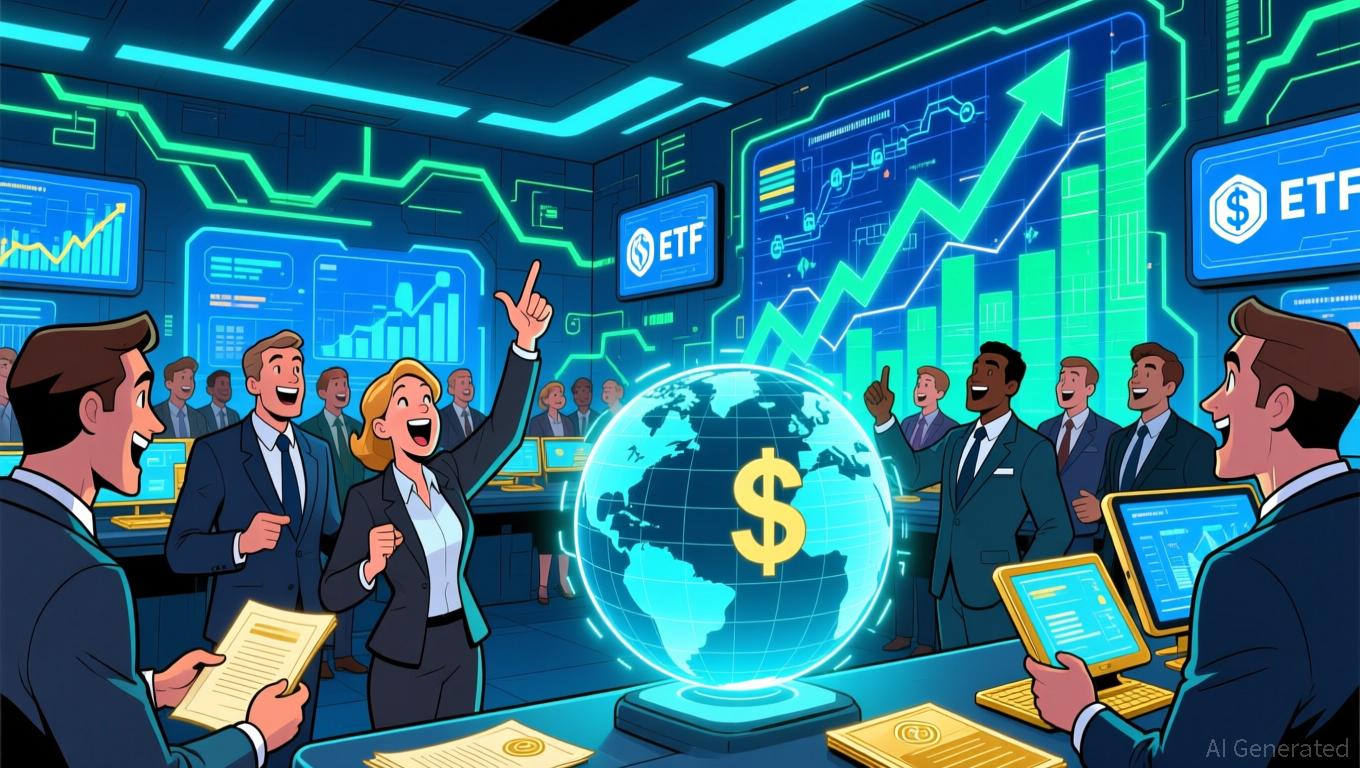XRP News Update: XRP ETFs Spark Optimism—Is $1,115 Within Reach?
XRP Price Outlook: Bullish Momentum and Institutional Adoption
XRP has recently become a major focus in the cryptocurrency sector, with growing speculation that a significant rally could propel its price toward $1,115. The acceleration of institutional involvement and a friendlier regulatory environment have fueled optimism about XRP's future. As of November 26, 2025, XRP is trading at $2.20, and both expert analysts and AI-driven forecasts are pointing to a potentially stronger upward trend ahead.
Spot ETFs Drive Market Interest
A major factor behind XRP’s recent surge is the introduction of spot exchange-traded funds (ETFs). These new investment vehicles have brought in substantial liquidity and attracted institutional investors. Notably, Franklin Templeton’s XRP ETF (XRPZ) and Grayscale’s GXRP debuted on the NYSE Arca, collectively drawing over $422 million in inflows within just a few days. This influx has provided American investors with a regulated way to gain exposure to XRP, potentially boosting its overall market value. David Mann of Franklin Templeton emphasized that ETFs offer a transparent and compliant route for institutions to invest in XRP, highlighting the growing interest from large-scale players.
Technical Analysis and On-Chain Insights
Market indicators are signaling the possibility of a breakout. XRP recently tested a key support level at $1.84—a price point it has consistently maintained since late 2024. Analysts suggest that if the price can hold above $2.20, it may ignite a rally toward $2.50 and possibly higher, provided buyers remain in control. On-chain data shows that 42% of XRP in circulation is currently held at a loss, indicating a strong foundation of undervalued positions that could contribute to increased buying activity.
Long-Term Projections and Regulatory Developments
Looking further ahead, some forecasts are highly ambitious. Platforms like CoinPedia predict XRP could climb to $5.05 by 2025 and reach $26.50 by 2030. Ultra-bullish scenarios, with targets as high as $526 by 2050, are based on the assumption that Ripple’s On-Demand Liquidity (ODL) service will see widespread adoption in international payments and remittances. However, these projections are contingent on broader economic trends and ongoing regulatory clarity. The SEC’s 2025 decision that secondary-market XRP sales do not constitute securities has eased some legal concerns, though uncertainties remain for the future.

Institutional Demand and Expanding Use Cases
Institutional interest continues to be a significant catalyst for XRP. Ripple’s ODL solution is gaining momentum within financial systems, with companies like Japanese gaming leader Gumi incorporating XRP into their treasury operations. Additionally, Ripple USD has surpassed $1 billion in market capitalization, further expanding the practical applications of XRP.
Risks and Volatility Remain
Despite the positive outlook, there are still risks to consider. If XRP falls below the $1.84 support, it could confirm a double-top pattern and potentially send the price down to $1.50. Short-term price swings are also expected, as futures open interest currently sits at $3.55 billion, indicating ongoing volatility.
What Would It Take for XRP to Reach $1,115?
While the prospect of XRP hitting $1,115 is not reflected in current mainstream forecasts, achieving such a milestone would require extraordinary growth, far surpassing even the most optimistic 2030 predictions. This scenario would depend on XRP becoming a fundamental part of the global financial system, with widespread institutional adoption and favorable macroeconomic conditions. For now, investors are closely monitoring the interplay of ETF inflows, technical signals, and regulatory updates as they shape the next chapter for XRP.